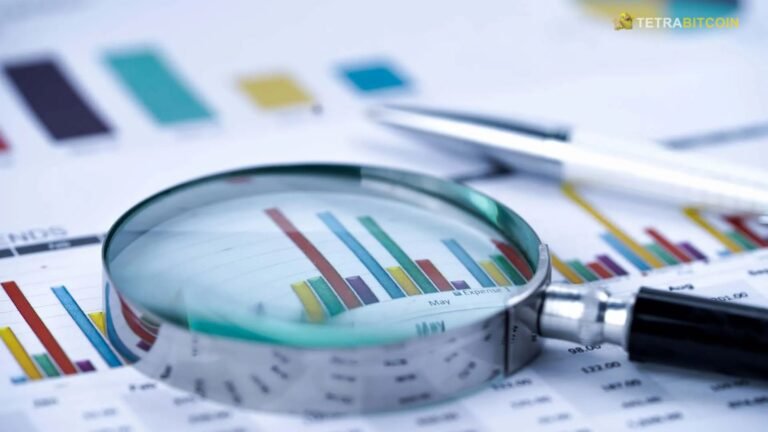Currency trading stands out among the many exciting and lucrative investing options available on the international market. To be a successful trader, you need to know what causes currency values to rise and fall. Fundamental research on foreign exchange is among the most effective tools for currency analysts.
This in-depth tutorial teaches the ins and outs of fundamental currency analysis, including its purpose, methodology, and importance. Whether you’re new to trading or just starting, this article will provide the information you need to become an expert in this crucial area of the foreign exchange market.
What is Currency Fundamental Analysis?
Fundamental analysis must consider societal, political, and economic aspects to determine how much a currency is worth in the foreign exchange market. Fundamental analysis of currency takes a step back. It examines the “big picture” to forecast how prices will go in the future, as opposed to technical analysis’s fixation on past price data and chart patterns.
Critical Aspects of Currency Fundamental Analysis
In forex trading, the fundamental analysis considers how a nation’s economy is generally doing and how it impacts the supply and demand for its currency. Several variables affect the value of currencies, such as:
- Interest Rates: Central banks establish interest rates to stabilize the economy and manage inflation. The demand for a currency tends to rise when interest rates are higher because more investment from outside countries is enticed.
- Inflation Rates: The buying power of a currency is more constant in an inflation-free economy, which is why that currency is more robust.
- Economic Indicators: Data about a country’s economy may be found in GDP, unemployment rates, and consumer spending reports.
- Political Stability: Currency strength is frequently associated with politically stable conditions, as these draw investment and lessen the likelihood of currency depreciation.
- Global Events: Natural disasters, geopolitical conflicts, and other global events can cause volatility in currency values.
Traders can improve their grasp of market movements and trading judgments by familiarizing themselves with these aspects.
Why is Currency Fundamental Analysis Important?
Traders rely on Currency Fundamental Analysis to decipher the myriad social, political, and economic forces that shape currency prices. Trading the foreign exchange market successfully requires understanding economic development, inflation, interest rates, and other long-term trends to make educated judgments and mitigate risk.
Predicting Long-Term Market Trends
When it comes to the foreign exchange market, macroeconomic variables are king. To better forecast how a country’s currency will perform in the future, traders can use fundamental analysis to gauge the state of the economy. Fundamental analysis is crucial for those seeking long-term success in currency trading because, in contrast to short-term changes caused by news or technical signals, it focuses on patterns over the long term.
Strategic Investment Decisions
Traders may make more informed decisions about which currencies to purchase or sell when they have a firm grasp of the fundamentals of those currencies. An example of this would be a country’s currency appreciating due to increasing demand and investment from outside sources in response to a fast-expanding economy. In contrast, a currency’s value could fall if investors flee to more stable investments in a country whose economy is in a slump.
Risk Management
Risk management also heavily relies on fundamental analysis. Market participants can foresee changes and alter their holdings in response to economic and global developments. Profits and losses can be better managed with a strategically timed entrance or exit rooted in basic research.
How to Perform Currency Fundamental Analysis
To do a currency fundamental analysis, one must look at several reports and indicators that show how a country’s economy is doing. Here are a few essential things to do:
Study Economic Indicators
The fundamental study of currencies relies on economic factors. You may learn a lot about a country’s financial health and potential currency fluctuations from these studies. The following are examples of highly significant economic indicators:
- Gross Domestic Product (GDP): A nation’s GDP is the market worth of all its manufactured products and services. Currency appreciation is a possible outcome of a rising GDP, which usually indicates economic expansion.
- Inflation Rate: Inflation is the rate at which prices for goods and services rise. Countries with low inflation rates tend to have stronger currencies because their purchasing power remains stable.
- Unemployment Rate: The economy may show signs of weakness if the unemployment rate is high, which might cause the currency to depreciate.
- Retail Sales and Consumer Confidence: These statistics show the robustness of consumer spending, the engine that propels economic growth. Robust retail sales can boost currency values.
- Trade Balance: The disparity between the amount of goods imported and exported by a nation. Currency demand can rise in the event of a surplus and fall in the event of a deficit.
Understand Interest Rates and Central Bank Policies
In the world of currency markets, interest rates are king. Central institutions like the US Federal Reserve and the EU Central Bank establish benchmark interest rates to rein in inflation and stabilize the economy.
An increase in interest rates by a nation’s central bank usually makes the currency more valuable to investors. In contrast, a decline in currency value can occur if investors flee to countries with lower interest rates in search of more significant profits.
Central bank pronouncements and monetary policy choices are essential for traders to monitor since they can influence currency markets and give insight into potential interest rate movements.
Political and Social Stability
The currency markets are susceptible to political developments. Changes in government leadership, elections, or geopolitical conflicts are a few events that might cause currency fluctuation. Investors are more likely to put their money into a nation with a stable political climate, which helps maintain a strong currency, whereas investors may flee an unstable political environment.
Social variables such as education levels and population increase affect economic and monetary stability over the long run.
Global Events and Market Sentiment
Natural catastrophes, economic crises, and trade wars are just a few global events that can potentially cause substantial swings in currency values. Traders with a solid grasp of fundamental analysis can utilize these occurrences to foretell how currency prices will change.
Furthermore, market mood is a critical factor in the fluctuation of currencies. The news, reports, and social media all have a role in shaping public opinion, affecting investor confidence and the value of a currency.
Combining Fundamental and Technical Analysis
Although traders commonly use technical analysis to spot patterns in price history, fundamental analysis focuses more on macroeconomic variables regarding currency. Trading success is more likely when traders use both approaches together since it gives them a more complete picture of the market.
For instance, technical analysis may assist you in finding the optimal entry point for a trade. In contrast, fundamental analysis might tell you that a currency will rise because of solid economic indicators. Combining the two methods allows traders to create more precise forecasts and trade at optimal times.
Currency Fundamental Analysis Mistakes to Avoid
Traders should be wary of these typical traps when using currency fundamental research despite its potential power:
- Overemphasizing a Single Indicator: It is possible to get biased results from economic studies if you focus on only one report or indicator. Before making judgments, it’s wise to look at various data points.
- Ignoring Geopolitical Risks: Sudden shifts in the market value might be caused more by geopolitical tensions and world events than by economic fundamentals. Always keep yourself updated on the latest news and market mood.
- Focusing Too Much on Short-Term Movements: Looking at the big picture, fundamental currency research focuses on the future. Missed chances and bad trading decisions might result from fixating on short-term price changes.
Conclusion
To be a good forex trader, you must master fundamental currency analysis. Analysts may learn much about a currency’s strength and how to trade it by looking at economic data, interest rates, political stability, and world events.
Combining this study with technical analysis can provide an even more potent approach to currency trading, which is helpful for long-term plans. You may significantly improve your chances of succeeding in the forex market by avoiding typical pitfalls and educating yourself on the basics.
The foundation of your decision-making process should be currency fundamental research if you’re serious about developing your trading tactics.
[sp_easyaccordion id=”2992″]

